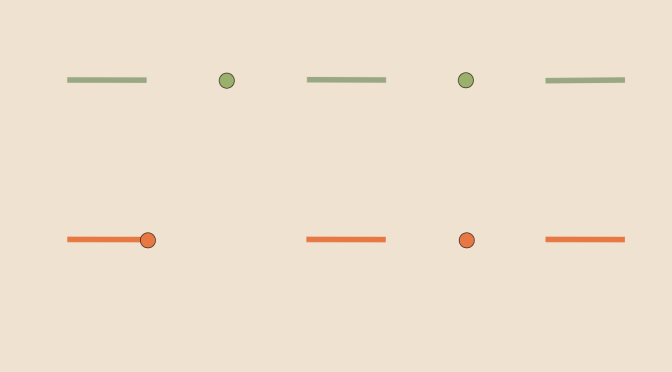We consider here two topological spaces \(X\) and \(Y\). We also suppose that \(f\) is a continuous bijection from \(X\) to \(Y\) and \(g\) a continuous bijection from \(Y\) to \(X\). Providing such hypothesis (H), is there necessarily an homeomorphism from \(X\) to \(Y\)?
We first look at the simple case where \(X\) is an interval \(I\) equipped with the subspace topology. If \(f\) is a continuous map defined from \(I\) to \(\mathbb{R}\) and \(f\) is supposed to be bijective, \(f\) is therefore one-to-one. According to a well known result, \(f\) is strictly monotonic on \(I\), the image of \(I\) under \(f\) is an interval \(J\) and the inverse map \(f^{-1}\) is continuous. Hence, if \(X\) and \(Y\) are two intervals, an homomorphism always exists providing the hypothesis (H).
For the second case, we consider a compact space \(X\) and a Haussdorf space \(Y\). Suppose that \(f\) is a continuous bijection from \(X\) to \(Y\). Then \(Y\) is compact and \(f\) is an homeomorphism. For the prove we need to show that \(f^{-1}\) is continuous. For this, consider any closed subspace \(F \subset X\). \(F\) is compact and the inverse image of \(F\) by \(f^{-1}\) is \(f(F)\), which is compact and hence closed. Finally, \(f^{-1}\) is continuous and \(f\) is an homeomorphism.
Finally we give a counterexample of two topological spaces \(X\) and \(Y\) which satisfy the hypothesis (H) while no homomorphism exists from \(X\) to \(Y\). We take as spaces \(\displaystyle X=\bigcup_{n=0}^\infty ((3n,3n+1) \cup \{3n+2\})\) and \(Y=(X \setminus \{2\}) \cup \{1\}\). And for the continuous bijections \(f: X \rightarrow Y\) defined by:
\[f(x)=\begin{cases}
x & \text{if } x \neq 2\\
1 & \text{if } x = 2\\
\end{cases}\] and \(g: Y \rightarrow X\) defined by:
\[g(y)=\begin{cases}
y/2 & \text{if } y \le 1\\
y/2 – 1 & \text{if } 3 < y <4\\
y-3 & \text{if } y \ge 5\\
\end{cases}\]
The continuity of \(f\) is clear at any point \(x \in X \setminus \{2\}\). \(f\) is also continuous at \(2\) as for \(\vert x-2 \vert < 1/2\) and \(x \in X\) we have \(f(x)=1\). One can also prove that \(g\) is continuous.
Let now suppose that \(h:Y \rightarrow X\) is an homeomorphism. The image under \(h\) of the open interval \((0,1)\) is an open interval included in an interval \((3n,3n+1)\) with \(n \in \mathbb{N}\). In fact it is even the complete interval \((3n,3n+1)\). If it wasn't the case, we would have \(h^{-1}((3n,3n+1) \setminus h((0,1))) \subset [2,+\infty)\), hence \(h^{-1}\) wouldn't be continuous. And we get a contradiction as \(h(1)\) cannot be defined.

